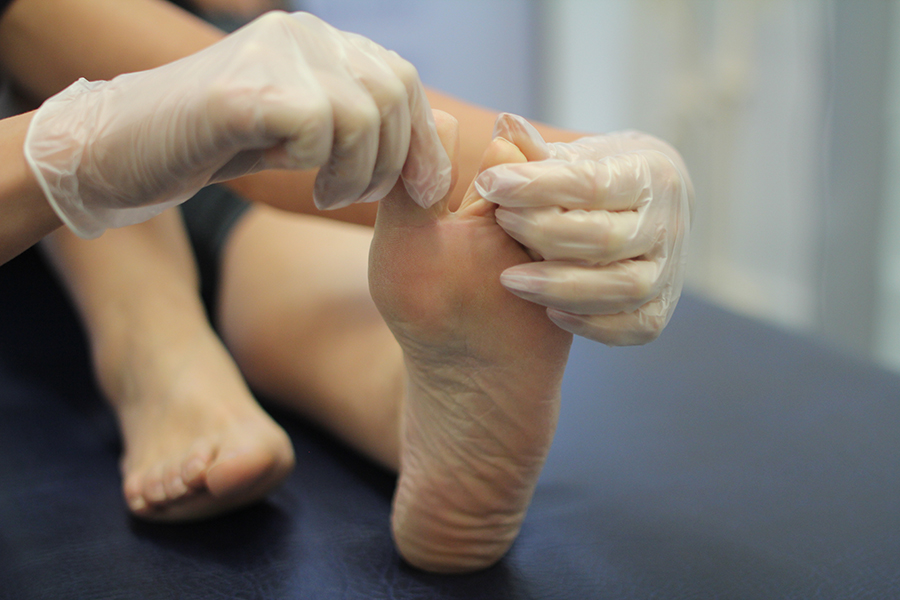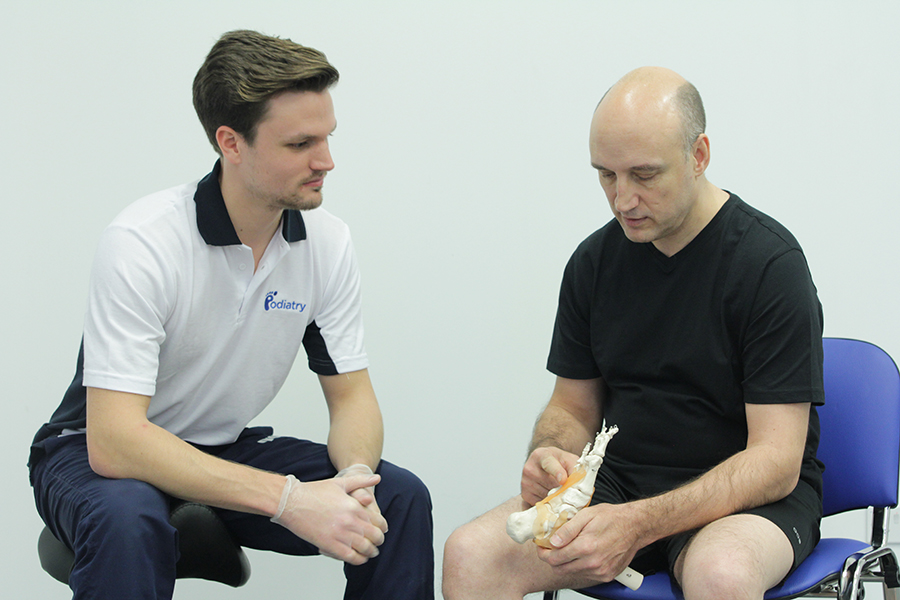Debridement
Debridement is the removal of tissue that makes up a verruca as well as any overlying callus
What is debridement?
Debridement is a method of treatment that is used in podiatry to help remove the overlying tissue of a verruca and reduce any associated pain. A podiatrist will use scalpel to take off the top layers of the lesion either as a treatment on its own or prior to other treatments in order to prepare the area.
How does debridement work?
Debriding a verruca can help to treat it in a number of ways. A verruca may be debrided for the following reasons:
- Prior to applying other forms of treatment such as salicylic acid. By reducing any overlying build-up of skin, the acid based treatment can penetrate the affected tissues more easily and with greater success
- Debriding helps to remove any tissue that has been destroyed by acid treatments allowing further treatment to penetrate deeper into the lesion
- If a verruca is surrounded by callus, the increased pressure can cause discomfort and therefore reducing this callus can help to provide relief from painful symptoms
- Debriding the verruca so as to cause pinpoint bleeding which can work to stimulate the body's immune response to fight off the virus.

What are the benefits of debridement?
Debriding a verruca has the following benefits as a form of treatment;
- It is usually a totally painless procedure
- There is no risk of damaging the surrounding healthy tissues
- Is a safer option for more at risk patients such as people with diabetes
- It can be carried out in clinic
- It does not require the use of local anaesthetic

Similar treatments/Services that could help
There are other verruca treatments available which may be offered depending on the outcome of a patient assessment. As with any verruca treatment intervention, nothing is 100% guaranteed to be effective, some treatments may work for some but not others. These alternative treatments include;
- Watch and wait: if you have a verruca that is not painful, there is a chance the body kills the virus on its own. In the mean-time, your podiatrist can remove the overlying surface of the verruca. Sometimes the verruca may bleed during this, this is quite normal; it is due to the blood vessels (which appear as black dots) within the verruca bursting. Salicylic acid (available at all our clinics)
- Needling (check with the office if this is available if interested)
- SWIFT Microwave Treatment for Verruca (check with the office if this is available if interested)
- Verrutop (available at all our clinics)
- Debridement (available at all our clinics)
- Occlusion
- Surgical removal (with a surgeon)
To book an appointment with one of our podiatrists or for a free consultation please contact us on office@chiropody.co.uk or call 0330 088 4222
Save 5% by booking an appointment online.



We work with:

Individuals

Organisations

Health professionals
Get in Touch!
0330 088 4222
If you would like to speak to one of our specialists then please complete this form.
We are open 7 days a week








